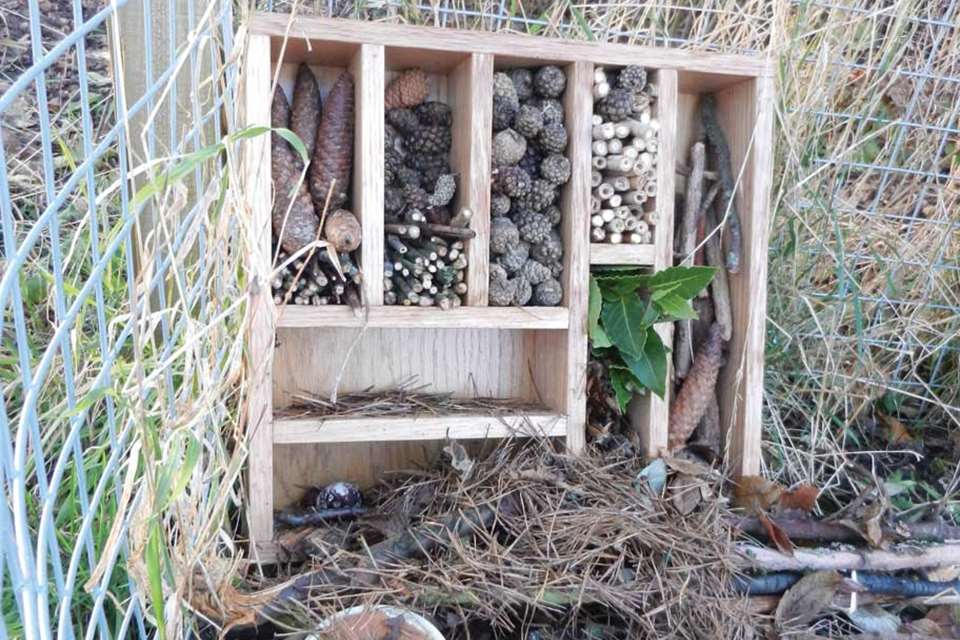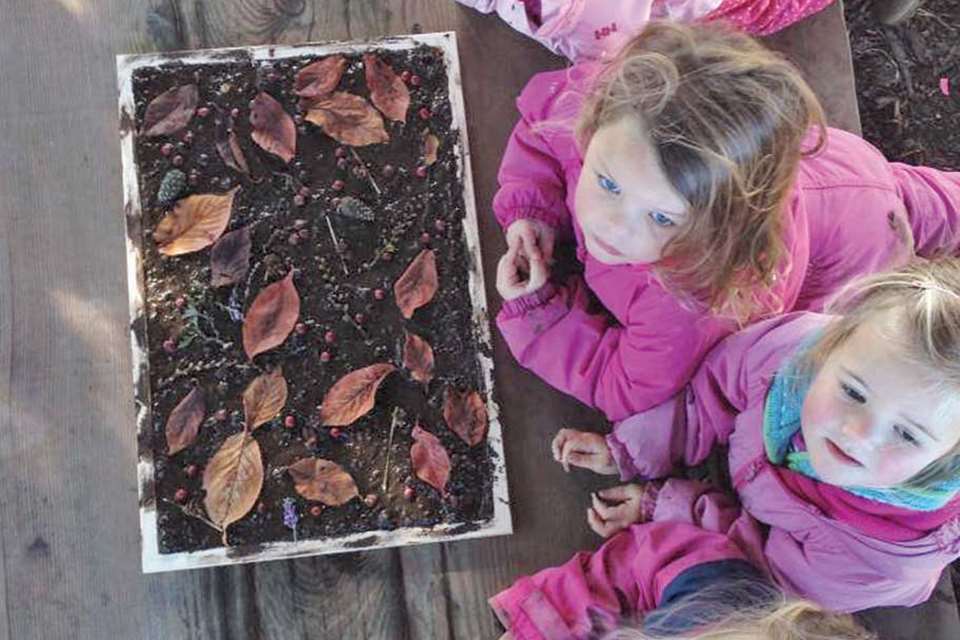Learning & Development: Cold Climates - Ice breakers
Ruth Thomson
Monday, February 23, 2015
Children at a primary school in rural Derbyshire have been making the most of the weather to explore the properties of snow and ice. Marianne Sargent paid them a visit.

Last month, Chinley Primary School in Derbyshire was nestled under a blanket of thick snow. During the snowfalls, Reception teacher Vicki Cawthorn had observed the children throwing and building with fresh snow, and stamping on and kicking frozen and compacted snow. So she decided to set up an afternoon of adult- and child-led investigations into the properties of ice - and I tagged along.
She began by producing three pieces of ice and explaining to the children that they would be carrying out a test to find out where in the setting the ice would melt the quickest.
After some discussion it was decided that one piece of ice should be put outside in the snow, another next to a radiator and another elsewhere in the classroom. The children were then invited to record their votes as to which piece of ice they thought would melt first.
The school playground had been out of action for a few days until it could be treated and made safe. Mrs Cawthorn explained to the children how this was possible with the help of an activity involving sprinkling flour, salt and sand onto ice cubes.
This was a very effective way of demonstrating the effect of salt on ice, as the children could observe it eating into the frozen surface. It also helped them to understand that although grit is needed to help tyres and shoes grip to a slippery surface, it does not actually melt the ice. It is the salt that does this.
A painting table set up with ice-lolly paints proved very popular. When asked what it was like to paint with ice the children described it as 'slippery', 'watery' and 'wet'. Some found it difficult to control and ended up with pools of watercolour, while others discovered that using the sharp edges of the ice would create more distinct lines.
OFF THE BLOCKS
On another table were two trays, one containing a large block of ice and the other a small cube. The children were asked which they thought would melt first. Many picked out the smaller piece because of its size. However, a few suggested the small piece would melt first because it had been handled more than the large piece. They knew the heat from hands were having an effect but they discounted the fact that although the large piece was being handled just as much it was taking longer to melt because of its size.
This activity also highlighted an interesting misconception. The larger block of ice had not frozen completely and there was a bubble of water inside it. When asked about this, the children believed it was because it was melting. Many found it difficult to understand that water freezes from the outside in and therefore the middle of the ice block had simply not frozen in the first place.
A final investigation set up outside asked the children to test the strength of ice. They were provided with a solid block to test against thinner sheets of ice and chunks of frozen snow collected from around the outdoor area. The children began by balancing the ice between two crates and placing weights on top of it.
When the weights did not break it straight away, the children started to drop the weights on it instead. This led to the discovery that thinner pieces of ice break much more easily than thicker pieces. When challenged to break the solid block, the children tried dropping larger weights onto it and after little success decided to throw it to the ground, where it only splintered, demonstrating its robustness.
At the end of the afternoon, Mrs Cawthorn brought the children back together to revisit the ice-melting experiment. The piece of ice from outside was still frozen, the piece next to the radiator was completely melted and the piece from the middle of the classroom was nearly melted. Mrs Cawthorn challenged the children to explain what had happened and they demonstrated a good understanding of the effect of heat on ice.
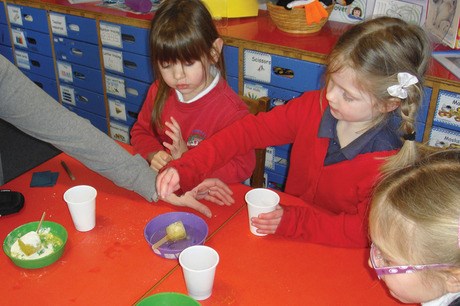
LEARNING OPPORTUNITIES
PSED: Takes account of others' ideas about how to organise activity.
CL: Uses talk to organise, sequence and clarify thinking and ideas.
PD: Handles tools, objects and malleable materials with safety and with increasing control.
L: Shows interest in illustrations and print in books and print in the environment.
M: Uses everyday language to talk about size and weight to compare objects and solve problems.
UW: Talks about the features of their own immediate environment and how environments might vary from one another; talks about why things happen and how things work.
EAD: Explores a variety of materials, tools and techniques, experimenting with colour, texture and form.
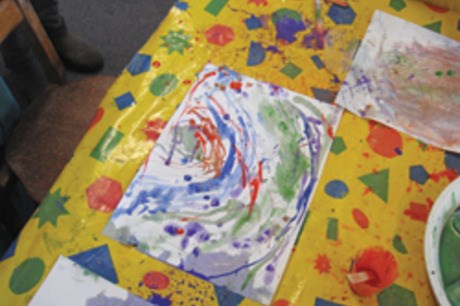
MORE ACTIVITY IDEAS
To build on children's explorations of ice, Chinley Primary School's Vicki Cawthorn went on to plan a topic on cold climates. Here are some of her ideas for activities that help children to imagine what life is like in the depths of a constant winter.
Polar explorer role play
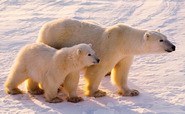 Transform the indoor role-play area into an arctic scene and provide resources that will inspire the children to go exploring.
Transform the indoor role-play area into an arctic scene and provide resources that will inspire the children to go exploring.
- Hang white and light-blue sheets and blankets and lay some on the floor to create a snow-covered effect.
- Provide snow boots, jackets, scarves, thick gloves, goggles and ski masks.
- Make an arctic truck using a banana box. Stick three large Celebrations sweet tubs on each side and wrap corrugated card around to create caterpillar tracks.
- Set up a pop-up tent (a white one will make a good igloo) and provide sleeping bags, flasks and a camping stove.
- Make a polar bear den with toy bears hibernating inside.
- Display photos of animals and birds native to the arctic and provide binoculars, child-friendly digital cameras, clipboards, notepaper and pencils.
Otherwise take advantage of the snow outside to create an authentic role-play setting. Set up an outdoor tent and provide sledges and small shovels. Place some resin garden ornaments of polar bears, penguins and seals inside and give the children binoculars and digital cameras to spot and photograph them.
Interactive display
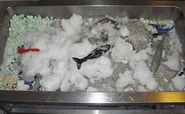 Create an interactive display that incorporates a small-world arctic scene.
Create an interactive display that incorporates a small-world arctic scene.
- Make fake snow by mixing 1kg cornflour with a can of shaving foam and sprinkle it into a shallow tray.
- Set out some small toy arctic animals with large white stones and pebbles.
- Add some Playmobil people to the scene with diggers and trucks.
- Provide information cards and books about arctic animals and polar explorers.
- Display pictures of arctic animals and wintery scenes.
This display can also be set up around a water tray filled with real snow brought in from outside. Add rocks, blue paint and arctic sea creatures to this scene.
More ideas
- Use books to find out what it is like to live in the arctic.
- Find out about different arctic animals: where they live and how they survive the cold.
- Paint pictures onto paper, take them outside and press them face down onto the snow to create a print.
- Fill large rectangular containers to mould the snow into bricks and build an igloo.
Resources
- - Printable arctic explorer role-play pack, arctic animal spotting form, small-world background, arctic PowerPoint and display posters (www.twinkl.co.uk).
- - Role-play camping set, including stove, lantern, penknife and flask (www.tts-group.co.uk).
- - Sledges (www.argos.co.uk and www.tesco.com).
- - Look for a range of resin animal ornaments in garden centres and websites such as eBay and Amazon.
- - Ice explorer small-world scene with igloo, animals and people (www.yellow-door.net).
- - 50 Fantastic Ideas for Rain, Wind and Snow by Sally and Phill Featherstone (Featherstone).
BOOK CORNER
 Antarctica by Lucy Bowman - clear information, good quality pictures and a useful glossary.
Antarctica by Lucy Bowman - clear information, good quality pictures and a useful glossary.
One Snowy Night by Nick Butterworth - heavy snowfall over Percy's park brings the animals to his hut for shelter.
The Polar Bear Son: an inuit tale by Lydia Dabcovich - the story of an Eskimo-Inuit woman who adopts a polar bear.
 Living in the Arctic by Allan Fowler - simple information book, ideal for young children.
Living in the Arctic by Allan Fowler - simple information book, ideal for young children.
The Emperor's Egg by Martin Jenkins and Jane Chapman - beautifully written factual account of the life of an emperor penguin.
The Rainbow Bear by Michael Morpurgo - the story of a polar bear who is bored of everything white.
 The Magic Sky by Lucy Richards - a little polar bear cannot wait until it is time to go and see the Northern Lights.
The Magic Sky by Lucy Richards - a little polar bear cannot wait until it is time to go and see the Northern Lights.
Igloos and Inuit Life by Louise Spilsbury - informative introduction to this different way of life.
Marianne Sargent is a writer specialising in early years education and a former foundation stage teacher and primary and early years lecturer.


